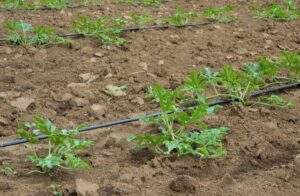A shade house or net house is a protected structure that allows the growth of plants under minimum sunlight intensity. It is deliberately covered with a shade net material to reduce the impact of the sun.
The design and properties of a net house make it ideal for growing vegetables, tree seedlings, and flowers.

Importance of Shade Net Houses in Kenya
Shade nets are increasingly becoming the better alternative for affordable protection of crops. The materials are cheap and more effective in reducing sunlight’s effect on crops and moisture levels in the soil.
Keep in mind that not all crops are tolerant to harsh sunlight of some regions in Kenya. Shade-loving plants and herbs such as ferns require effective net house structures.
Sizes of Net Houses
There is no limit to the size of a shade or net house to construct as long as it remains stable. Standard sizes are available in dimensions: 8 x 15m, 8 x 24m, 8 x 30m, and 16 x 30 m.
How to Grow Crops in Net Houses
Depending on whether you are propagating seedlings or planting mature seedlings, the dynamics can be different.
For seedling propagation, you can use seedling trays or prepare raised seedbeds. Seedling trays are more effective and result in 100% seedling germination and maturity.
Cultivation of mature crops such as vegetables requires proper spacing to enhance balance in growth. Ideal spacing should also give room for weeding and water or nutrient supply.
It is recommended for most crops that you water using smart irrigation systems such as drip irrigation. The method allows a steady water supply to the plant root zone and saves up maximum water.
Materials for Installation of Shade Net Houses
- Sand, cement, and ballast for Pole strengthening.
- Shade nets
- Steel Metal poles
- Tapping Screws
- Wooden poles for wooden shade houses
- Drip kits.
Optional things to include;
You can also get a quote that includes optional items such as;
- Water tanks
- Support structures
- Metal tank Stands
- Drip Kits
- Fertilizer kits
Shade Nets to Use
There are various types of shade nets available for making shade net houses. They exist in different sunlight filtration rates ranging from 35% to 90%.
35 % – reduces the sunlight rate that reaches the crops by 35%.
55 % – blocks 55% of the sun rays entering the structure
75 % – limits 75% of the sun power
90 % – allows only the remaining 10 % and limits 90 % sunlight.
Prices of Shade Nets
The cost of shade nets is per the filtration levels. Quality nets are available at Aqua Hub Kenya at affordable prices.
Call 0790719020
Types of Shade Net House in Kenya
Metallic Net house
Shade net structures are built with strong steel structures to hold the net. The major reason to choose metallic net houses is their long life expectancy. Steel metals can last for more than 15 years.
Wooden Net houses
The structure is wooden poles holding the net around the whole structure. Wooden poles are cheaper and readily available to use. Common wood poles to use is strong timber such as cedar, cypress, eucalyptus, and blue gum.
Advantages of Growing in Shade Net House
- Net houses present a stable environment for crops to thrive faster. The ideal combination of optimal temperature, moisture, and humidity makes plants grow well.
- Crops get a shield from excess sun heat and leaves remain green and healthy.
- Maximum ventilation to balance temperature.
- No entry for destructive animals
- Pollination still occurs since the net mesh sizes allow air and water to enter.
Shade Net House Installation by Aqua Hub
Want a strong reliable Shade net house structure? Get quality structures for your high-value crops from Aqua Hub today.
Call 0790719020





